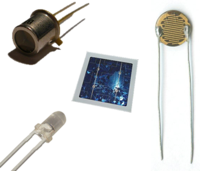
Photo from wikipedia
Malaria is still a major disease in sub-Saharan Africa and South-East Asia. This is despite different interventions by the World Health Organization (WHO), such as insecticide-treated mosquito net, antimalarial drugs,… Click to show full abstract
Malaria is still a major disease in sub-Saharan Africa and South-East Asia. This is despite different interventions by the World Health Organization (WHO), such as insecticide-treated mosquito net, antimalarial drugs, indoor residual spraying, and rapid diagnostic tools. In 2018, the mortality rate due to malaria was estimated to be 405 000, with children under five years accounting for 67% of all malaria deaths. Malaria can be prevented and treated using different strategies as recommended by WHO. However, the lack of rapid diagnostic tools with good selectivity and sensitivity is still a challenge. Therefore there is a need to develop rapid, low-cost, and portable analytical methods for quantifying malaria. This review focuses on the role of malaria biomarkers (Plasmodium falciparum Lactate Dehydrogenase (PfLDH), Plasmodium aldolase, Plasmodium falciparum Histidine-Rich Protein 2 (PfHRP2), Plasmodium falciparum Glutamate dehydrogenase (PfGDH), and Hemozoin) in diagnosis. Recent developments in nanomaterial-based electrochemical and colorimetric biosensors for malaria diagnosis are discussed. Finally, the review concludes with closing remarks and future perspectives of electrochemical biosensors.
Journal Title: Analytical biochemistry
Year Published: 2022
Link to full text (if available)
Share on Social Media: Sign Up to like & get
recommendations!